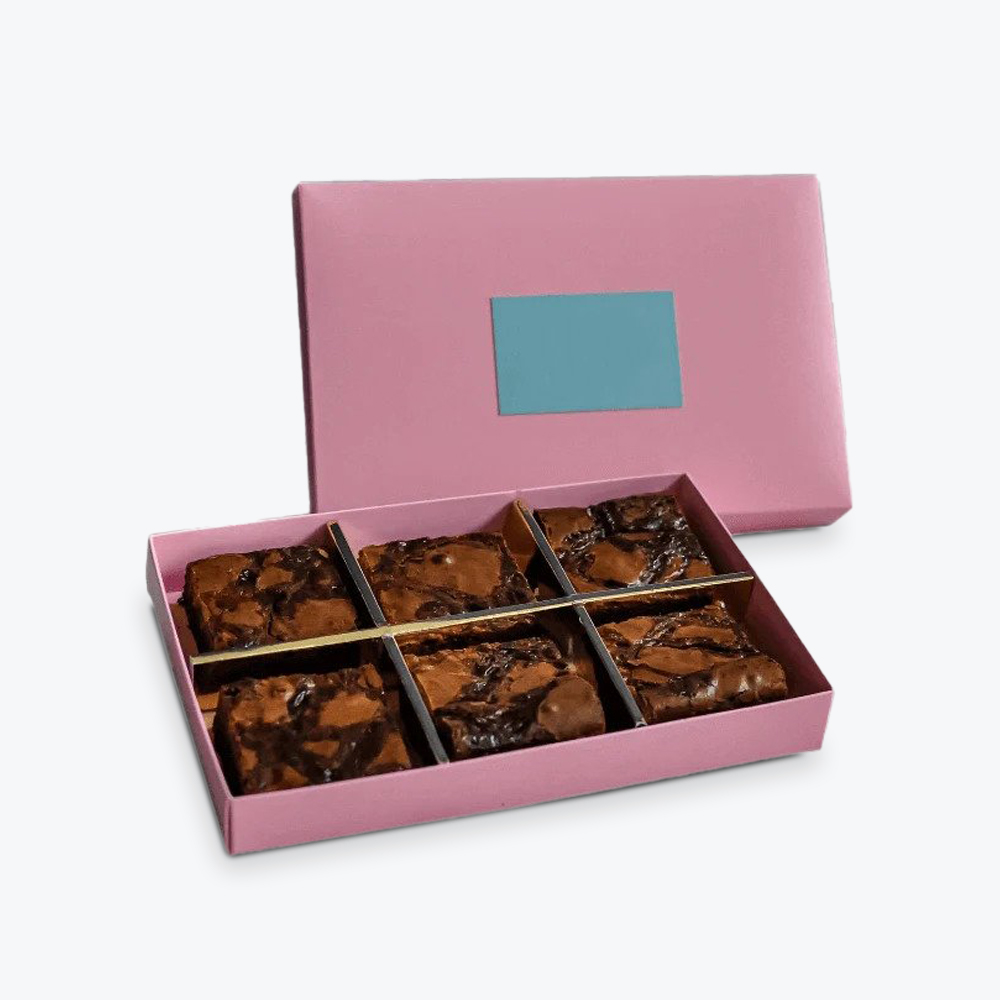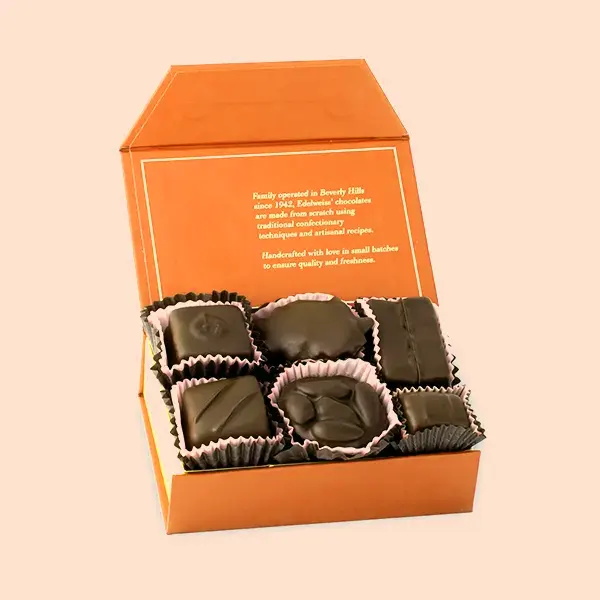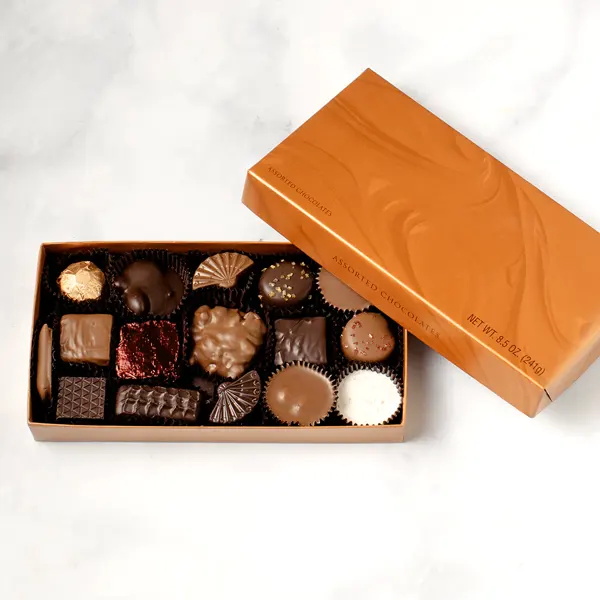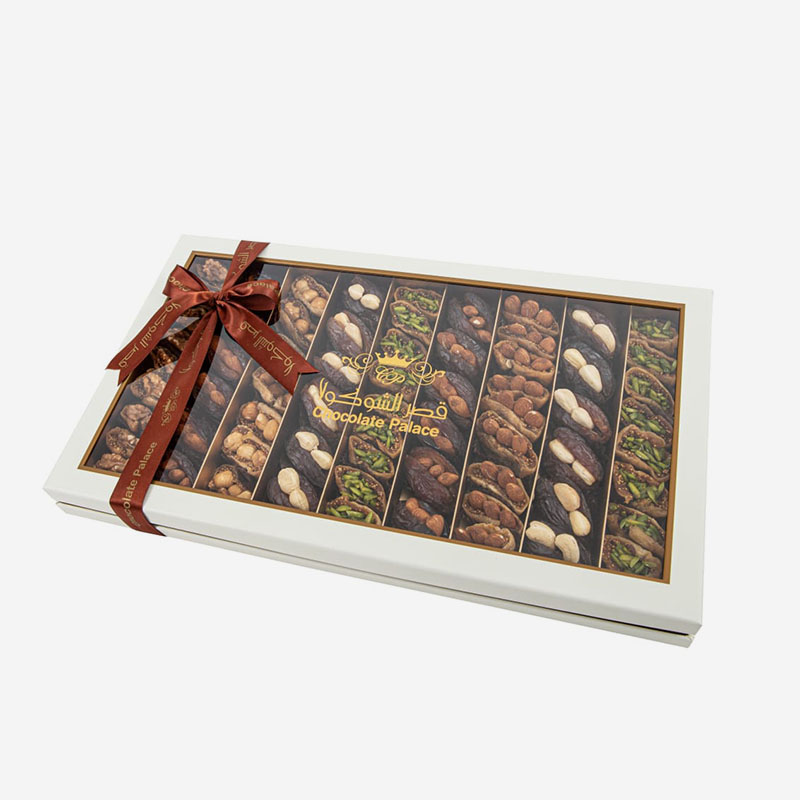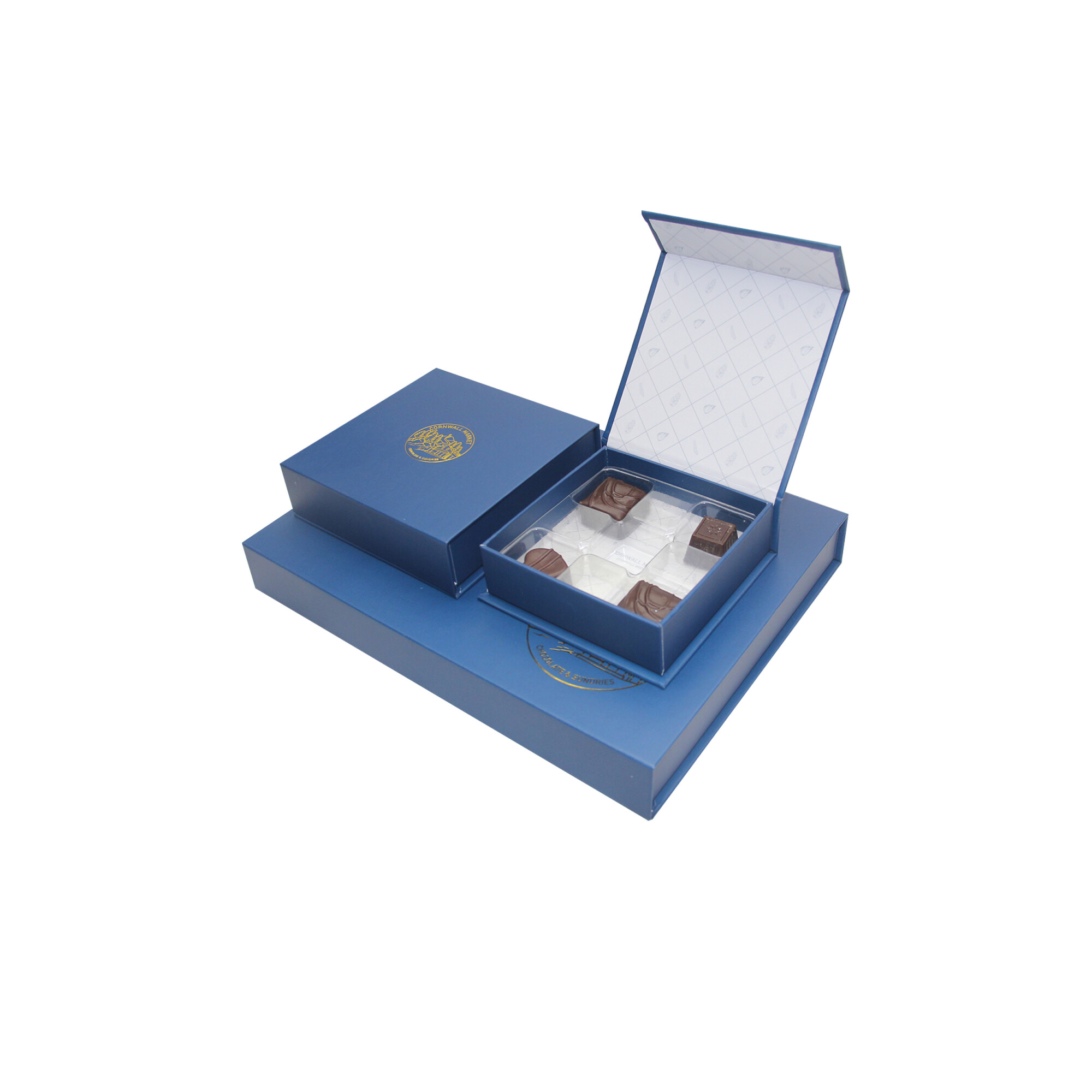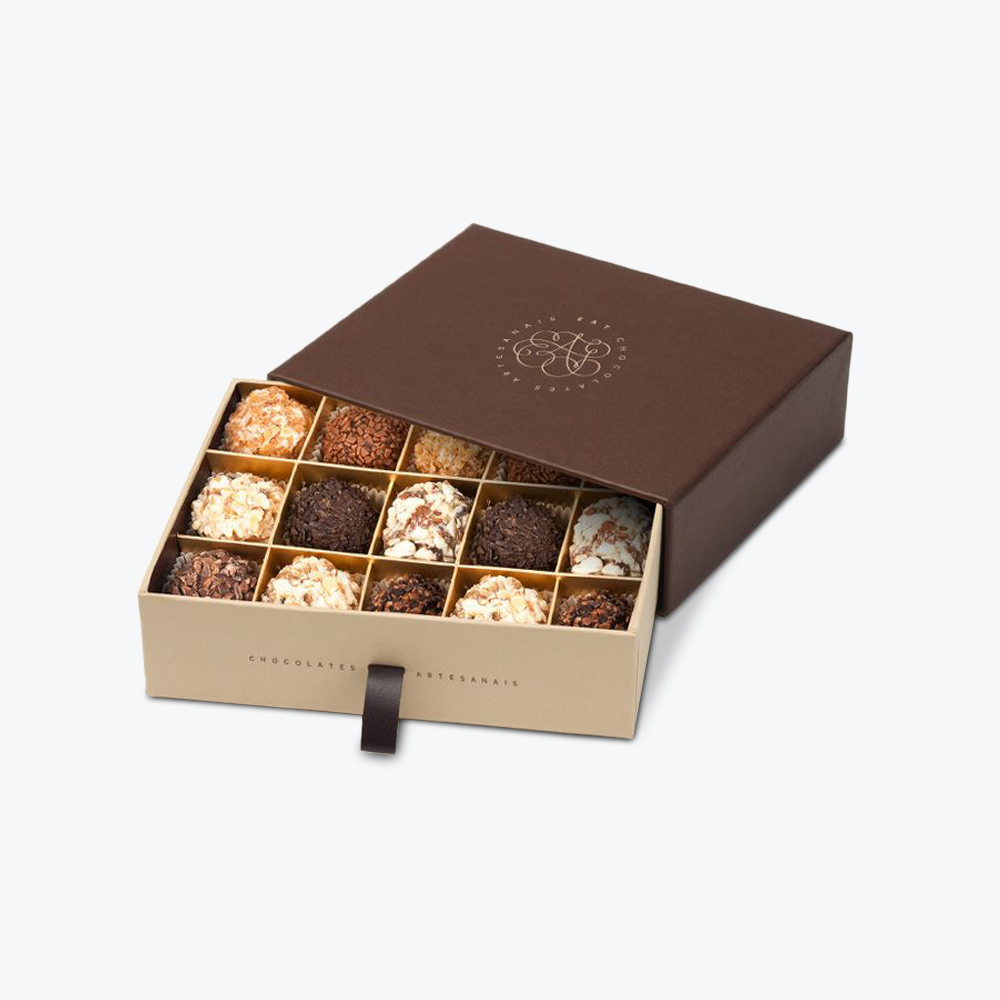With the increasing consumer focus on sustainability, chocolate packaging is gradually shifting toward environmentally friendly options. This article will provide you with a detailed guide on how to make a chocolate box, including the materials needed, step-by-step instructions, and how to enhance your brand image through eco-friendly design, helping you stand out in the market.
The interior packaging design of the chocolate box can be diversified, mainly including the following elements:
1.Lining material:
Paper lining: Used to wrap chocolate, can be white or colored paper lining, increase the beauty.
Plastic lining: Transparent plastic material that can display the chocolate well while protecting the chocolate from damage.
Aluminum foil lining: Used to provide additional moisture protection and maintain the freshness of the chocolate.
2.Alternate Floor:
Paper compartments: used to separate different types of chocolate and prevent mixing.
Plastic or cardboard compartments: Designed as small lattice shapes that can hold different shapes of chocolate and remain firm.
3.Fillings:
Confetti or grass: Used to fill the gaps in the box to add visual effect while providing protection for the chocolate.
Foam or sponge: In high-end chocolate boxes, these materials may be used to provide extra cushioning.
4.Packing instructions or cards:
Product introduction card: You can attach detailed information about the chocolate, such as taste, ingredients and brand story.
Greeting cards: Used for special occasions, such as birthdays, holidays, etc., to increase emotional connection.
5.Environmental protection materials:
Compostable materials: More and more brands are starting to use compostable linings and fillers to comply with sustainability requirements.
Depending on the positioning of the chocolate brand and the target market, the design and material selection of the internal packaging will vary. High-end brands such as Bateel often use beautiful packaging designs to enhance the overall image and user experience of the product.
Materials List
Before you start making the chocolate box, gather the following eco-friendly materials and tools:
- Eco-Friendly Cardboard: Choose recyclable cardboard, such as kraft paper or recycled paper. These materials are not only sturdy but also environmentally friendly.
- Paper Tape: Used for securing the seams of the box. Opt for non-toxic eco-friendly tape.
- Scissors and Craft Knife: For cutting the cardboard to ensure precise dimensions.
- Ruler and Pencil: To measure and mark cutting lines on the cardboard.
- Decorative Materials (Optional): Such as natural fiber twine, dried flowers, or biodegradable stickers to enhance the box’s aesthetics.
Step-by-Step Instructions
Step 1: Measuring and Cutting
- Determine the Box Size: First, decide on the size of the chocolate box you want to create. Typically, the dimensions should align with the shape and quantity of the chocolates.
- Mark the Cardboard: Using a ruler and pencil, mark the required dimensions on the eco-friendly cardboard. Ensure that the marked lines are clear for easy cutting.
- Cut the Cardboard: Carefully cut along the marked lines using scissors or a craft knife. Keep your hand steady to ensure clean edges.
Step 2: Assembling the Box
- Fold the Cardboard: Fold the cardboard according to the marked lines to form the edges and bottom of the box. Ensure that each fold is flat so the box can be assembled securely.
- Adhere the Seams: Use paper tape to secure the seams where needed. Ensure that the adhesive is strong enough to prevent the box from loosening during use.
Step 3: Decorating and Packing
- Decorate the Box: You can opt for natural materials for decoration, such as tying the box with natural fiber twine or applying biodegradable stickers on the box to enhance its beauty.
- Fill with Chocolates: Finally, place the chocolates inside the completed box, ensuring that the packaging is neat and protects the chocolates from damage.
Advantages of Eco-Friendly Design
In today’s competitive market, eco-friendly design is a key factor for brands to stand out. Here are some advantages of designing an eco-friendly chocolate box:
- Enhances Brand Image: Using eco-friendly materials showcases the brand’s commitment to the environment, attracting consumers who prioritize sustainability.
- Aligns with Market Trends: More consumers are willing to pay a premium for eco-friendly products, and sustainable packaging can help brands capture more market share.
- Boosts Customer Loyalty: When consumers perceive a brand’s social responsibility, they are more likely to choose and remain loyal to that brand.
Bateel Chocolate Brand Case Study
Bateel is a well-known chocolate brand recognized for its high quality and unique packaging design. The brand utilizes eco-friendly boxes as its primary packaging method, enhancing its brand image through the following strategies:
- Use of Eco-Friendly Materials: Bateel’s boxes are made from recyclable cardboard, reducing environmental impact. The brand emphasizes its eco-friendly philosophy in its marketing, enhancing consumer recognition.
- Elegant Design: Bateel’s chocolate boxes feature unique and elegant designs that capture consumers’ attention. The use of natural decorative elements further enhances the box’s premium feel.
- Market Positioning: Bateel positions itself as a high-end chocolate brand, attracting affluent consumers through eco-friendly packaging, successfully establishing a strong brand image.
Conclusion
Making a chocolate box is not just a simple craft; it’s an important strategy for enhancing brand image and meeting market demands. By selecting eco-friendly materials and clever designs, you can not only provide good protection for your chocolates but also contribute to your brand’s sustainable development. Drawing inspiration from Bateel’s successful experience, you too can achieve a perfect combination of eco-friendliness and aesthetics in your chocolate products.
We hope this guide helps you successfully create beautiful chocolate boxes and gain more recognition and traffic in the market!
Post time: Oct-12-2024




